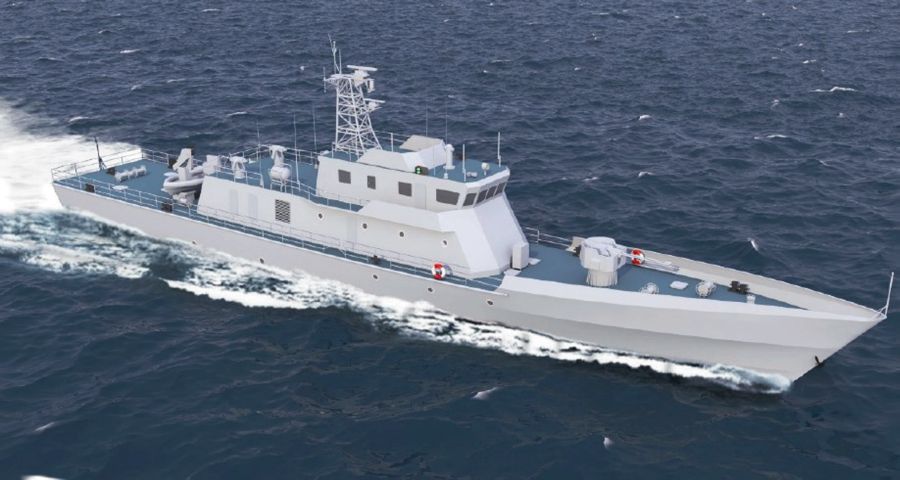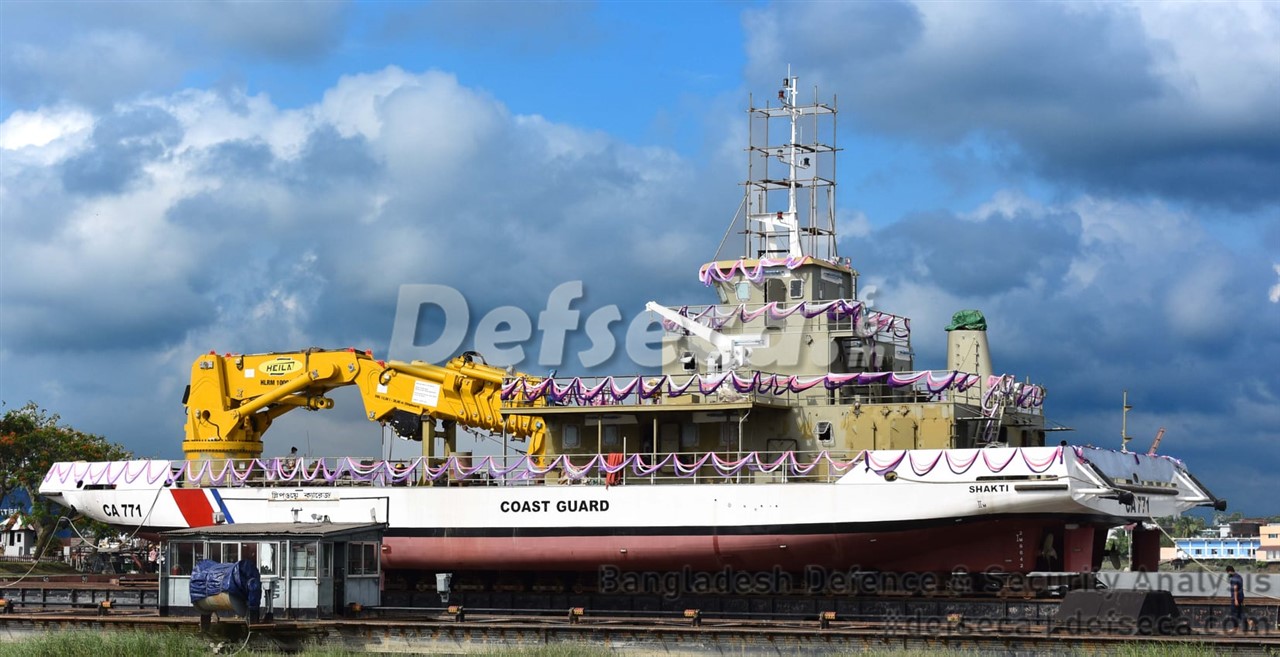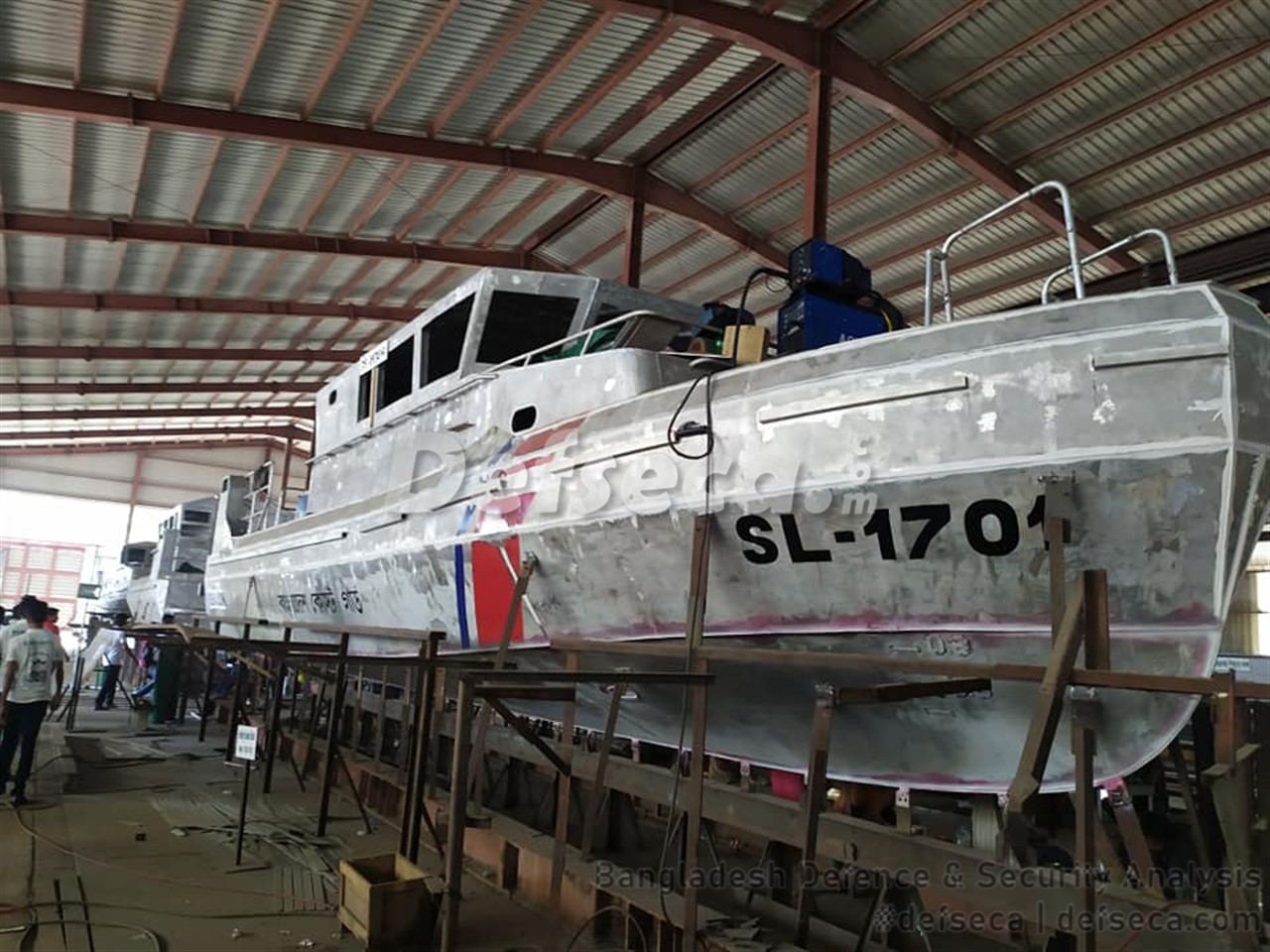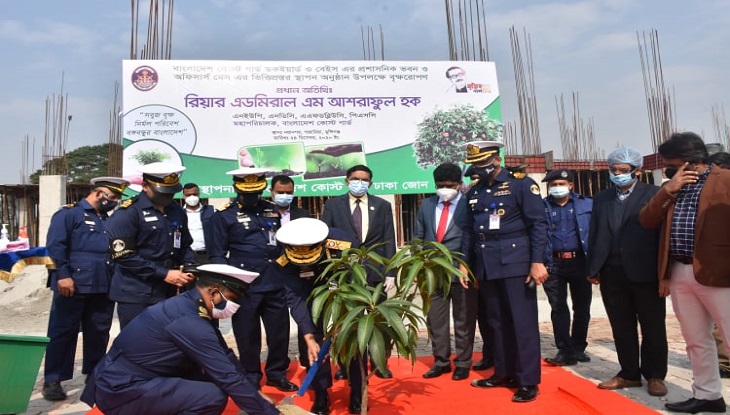The Bangladesh Coast Guard (Bengali: বাংলাদেশ কোস্ট গার্ড (BCG) is the maritime law enforcement force of Bangladesh. It is a paramilitary force which is under the jurisdiction of the Ministry of Home Affairs. Its officers are transferred from the Bangladesh Navy. The Bangladesh Coast Guard also performs the duty of maritime border security of Bangladesh. The headquarters is located in Dhaka, Bangladesh. Currently the coast guard has 3,339 personnel and 63 ships. A huge modernisation plan named Coast Guard Goal 2030 has been undertaken to enhance its capabilities.
History
The Bangladesh Navy had been performing the duties of a Coast Guard in addition to own duties of maritime defence since 1994. As time passed, the growing responsibility and workload became inconvenient for the Bangladesh Navy, with the increasing volume of policing duties at sea taking away from its primary role. The emergence of the Bangladesh Coast Guard was the result of the growing awareness in the Government for the requirement of a separate service to enforce national laws in the waters under national jurisdiction and ensure safety of life and property at sea. Following this the Coast Guard Act 1994 was passed by the Parliament in September 1994. Formally the Bangladesh Coast Guard in its present shape came into being on 14 February 1995 and started operational activities with two patrol craft received from Bangladesh Navy. The force is under the jurisdiction of the Ministry of Home Affairs.
The Bangladesh Coast Guard motto is 'Guardian at Sea'.
The Bangladesh Coast Guard is a unique force that carries out an array of civil and military responsibilities touching almost every facet of the Bangladesh maritime environment. The force now has a zone, three bases, 18 stations, 10 outpost, 57 different categories of water vessels and eight pontoons along with 3,339 manpower.
Role and mission
Over 90% of Bangladesh exports and imports pass through two sea ports at Chittagong and Mongla. Sea-lines communication to these two sea ports are the life lines of the Bangladesh economy. UNCLOS 1982 has made provision for sovereign rights for exploration and exploitation of living and non-living resources in the Bangladesh EEZ. The fishery sector contributes an important part of national export earning. A significant quantity of gas has been discovered at Sangu in the Bay of Bengal, the extraction of which has already started. Apart from these, a vast number of ships and craft of various types and sizes operate at sea for trade, commerce, fishing, research, exploration and extraction of oil, gas and minerals and so on. To exercise effective control, to ensure safety and security and protect national and international maritime interest at sea, all these diverse activities are brought under various national and international laws and acts.
Mission
Control piracy, illegal trafficking, protect fishery, oil, gas, forest resources and environmental pollution in Bangladesh waters and coastal areas, ensure overall security and law and order through security assistance to sea ports, conduct relief and rescue operation in the coastal areas during natural calamity
Role
Primary
- Preserve national interest at sea
- Fishery protection
- Prevent illegal immigration through the sea
- Pollution control
- Piracy control
- Prevent smuggling, trafficking of illegal arms, drugs and narcotics
- Disaster relief operations
- Search and rescue operations
- Preservation of forest
- Surveillance over the sea areas of Bangladesh
- Carry out any other duty assigned by the government
- Assist Bangladesh Navy during war
The area of jurisdiction of the Bangladesh Coast Guard is the sea territory of Bangladesh as declared under the Territorial and Maritime Zone Act, 1974. The Bangladesh Government being a signatory has ratified UNCLOS, 1982.
Areas of Jurisdiction in the Bay of Bengal are:
- Internal Waters
- Territorial Water
- Contiguous Zone
- Exclusive Economic Zone
- Continental Shelf
The Bangladesh Coast Guard has the following zonal command: East, West, South and the Dhaka sub zone.
Future modernisation plan and developments
The total development plans under the Coast Guard Goal 2030 has been divided into three phases: the short term form 2015 to 2020, the medium term from 2021 - 2025 and the long term from 2026 - 2030.
Short term (2015 — 2020)
As per the short term plan, the manpower of the force will be increased from 3,305 to 6,197. The organization of the force will be updated. Currently coast guard runs under three zonal headquarters. The coast guard will have three branches, six directorates, three regional headquarters and two more zonal headquarters within 2020. Four composite stations and one hospital will also be set up within this period.
The coast guard has purchased four Minerva-class corvettes from Italy which were later refurbished and transformed into offshore patrol vessels which are currently known as Leader-class offshore patrol vessel. The original sensors and armaments were removed from the ship and replaced by Bangladesh Coast Guard requirements. They are currently armed with one Oerlikon KBA 25mm gun. Already two vessels are in service and the remaining two were delivered in December 2017. Contract has been signed with Khulna Shipyard for three Padma class Inshore Patrol Vessels in 2016. Separate contracts has been signed with Dockyard and Engineering Works Limited for the construction of two Shobuj Bangla class Inshore Patrol Vessels two 52 m Inshore Patrol Vessels and two 43 m Fast Patrol Boats. Within 2020, the force plans to buy four more Offshore Patrol Vessels and two Pollution Control Vessels. The number of small patrol crafts will be increased to 38 within this period.
Bangladesh Coast Guard is also planning to introduce hovercraft into its service for better patrolling capacity through the coast. At least two hovercraft will join the force by 2020.
The coast guard will start its journey as a two dimensional force by inaugurating its aviation wing in this period. 2-4 maritime search and rescue (MSAR) helicopters will be procured for the force within 2020. Surveillance Unmanned aerial vehicle (UAV)s may be introduced also in this period.
Coast guard will start its journey towards modern surveillance technologies within 2020. The installation of Long-range identification and tracking (LRIT) and Vessel Traffic Management Information System (VTMIS) systems will be started within this period.
Medium term (2021 — 2025)
In this period one technical training base and one aviation training base will be set up for the coast guard. The aviation wing of the force will be enriched. Manpower of the force will be increased.
As per the plan, the force will get two more Pollution Control Vessels three Riverine Patrol Vessel, two water jet scooters and 30 high speed patrol crafts in the medium term.
To enrich the aviation capacity, six more helicopters will be procured to make the total number of helicopters ten. Within the same period, six UAVs will be procured also.
As the plan goes, the process of installing Long-range identification and tracking (LRIT) and Vessel Traffic Management Information System (VTMIS) systems will be completed by 2025.
Long term (2026 — 2030)
The development of the Bangladesh Coast Guard will continue to thrive in this period. The manpower of the force will be increased further. More ships and UAVs will be added. This period will see the introduction of the maritime patrol aircraft to the coast guard.
Ships
Offshore Patrol Vessel (Corvette) 4
Fast Attack Craft (Gun) 4
Coastal Patrol Craft 5
Riverine Patrol Craft 6
Defender-class boat 35
Metal shark boat 9
Aluminum Workboat 6
Harbour Patrol Boat 4
Most of these vessels were built in local shipyard.
https://coastguard.portal.gov.bd/sites/default/files/files/coastguard.portal.gov.bd/page/9cd66d20_a6ff_4926_9c1b_949e80e87674/ALL BOAT OF BCG.pdf
Prime Minister Sheikh Hasina has said the Bangladesh Coast Guard will be strengthened so that they can play a role in helping the government tap the potential of the ‘Blue Economy’.
“Keeping in mind the Blue Economy and Vision 2030 and 2041 for Coast Guard, the government has planned to increase its manpower from 4,781 to 15,000 gradually,” she said on Sunday.
The Prime Minister said this while addressing the commissioning programme of two Leader Class (Ex-Minerva class) offshore patrol vessels, five Sobuj Bangla class in-shore patrol vessels based on Padma class OPV, two fast patrol boats and BCG Base Bhola.
The programme was held at Coast Guard Berth Patenga while the Prime Minister joined it virtually from her official residence Ganobhaban.
Sheikh Hasina asked the Bangladesh Coast Guard members to discharge their responsibilities with patriotism, honesty and faith.
"You’ll to pay a special attention [to your duties] so that the good image of the Coast Guard remains unharmed always," she said.
The Prime Minister assured the force of all-out cooperation from the government in maintaining its forward march. "I can give you that assurance."
She said Narayanganj dockyard and Khulna shipyard, now operating under Bangladesh Navy, are building two inshore patrol vessels, one floating crane, two tugboats (already launched) and 16 boats. "Soon, these will be inducted in the Coast Guard fleet."
Sheikh Hasina mentioned that a dockyard is being prepared in Gajaria for the Coast Guard to increase its capacity of repairing and maintenance.
"To enhance the capacity of this force, initiatives have been taken to procure hovercraft, drone, 3500 metric-tonne vessel which can in all weathers. We want to build the Coast Guard as a modern and time befitting force," the Prime Minister said.
Terming Bangladesh a land of natural calamities, she said the people of the country have to live facing all these natural adversities. "We’ve to live with these, we’ve to put our attention towards saving the lives of people facing all the odds, we’ve to acquire that capabilities."
Hasina said Bangladesh has got a vast ocean boarder which can be utilised for the economic development of the country. "The Bay of Bengal is a very important ocean, trade and commerce of many countries run through this area."
The Prime Minister mentioned that the government wants to ensure security in coastal districts and improve their economic condition.
"Keeping that in mind, we want to use our sea resources for our economic development. For that, we’ve declared the Blue Economy, we have taken a plan how we could use our ocean resources for the country's development," she said.
Director General of Bangladesh Coast Guard Rear Admiral M Ashraful Haque also spoke at the programme from Coast Guard Berth, Patenga. Previously Bangladesh Navy commissioned five warships together in a day.
PM eyes blue economy, says Coast Guard to be strengthened
Prime Minister Sheikh Hasina has said the Bangladesh Coast Guard will be strengthened so that they can play a role in helping the government tap the potential of the ‘Blue Economy’.














